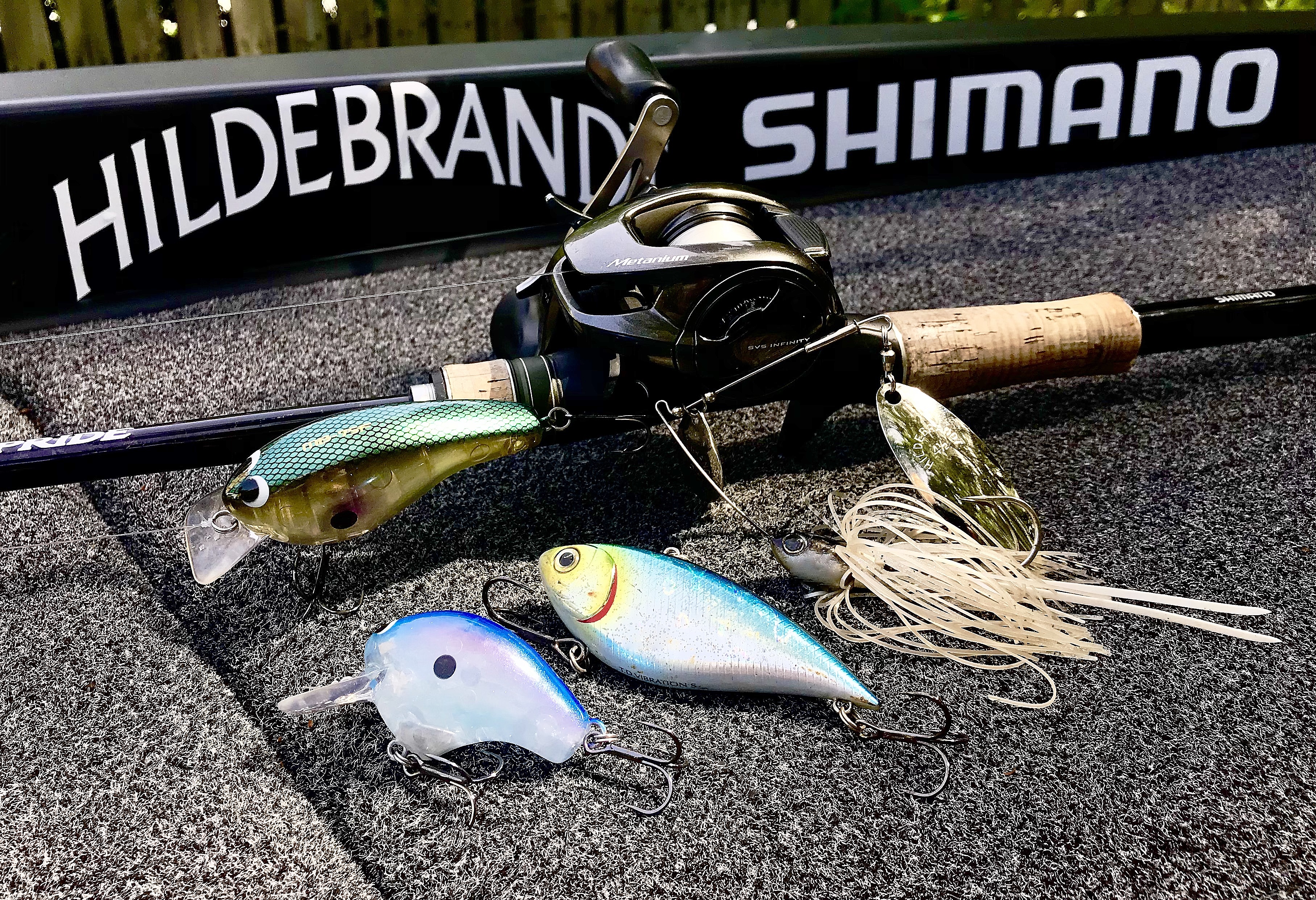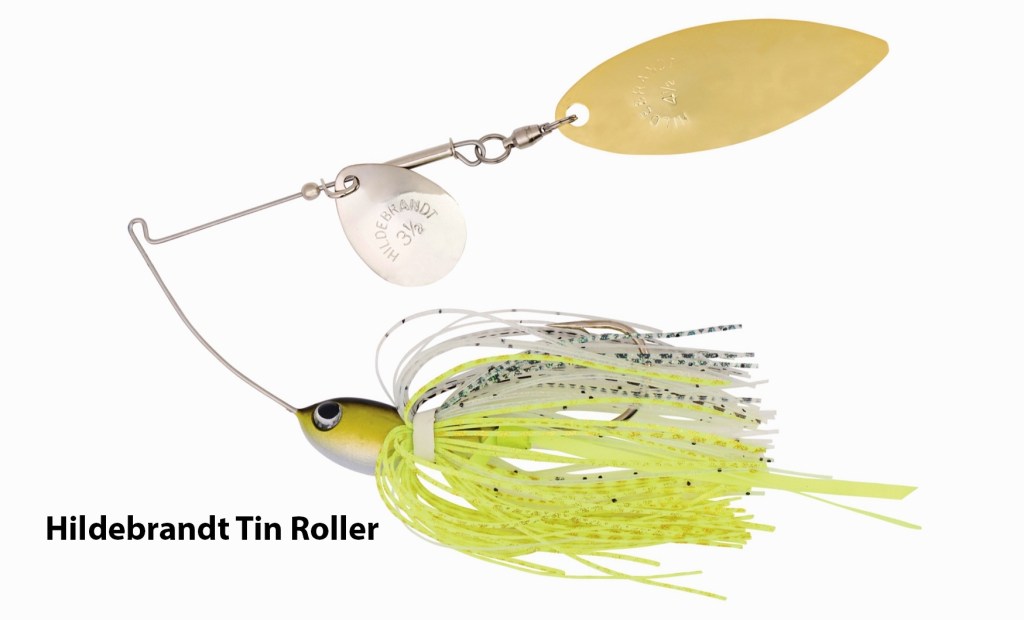
Early in my career, while fishing a wintertime event on Lake Martin in Alabama, I learned a valuable lesson from Rick Clunn. And that was burning a spinnerbait in gin-clear water for largemouth and spotted bass.
Before that, I assumed speed reeling a lure, any lure, was limited to warm water applications — like ripping a lipless crankbait through submerged hydrilla, or burning a buzzbait or some soft-plastic lure over shallow flats. But all that went out the window when Rick posted big weights in that cold water event on Lake Martin.
His pattern was simple: Hit a bunch of small, shallow pockets. Cast to their very backs, and burn the bait all the way back to the boat. He used a compact willow-leaf spinnerbait weighted for high-speed retrieves and kept it just under the surface. I remember him on stage, saying how every fish he caught had engulfed the lure.
Think about that for a second. Here’s a guy speed reeling a spinnerbait in 40- to 50-degree water, that’s crystal clear.
To that point, I had only burned a spinnerbait under relatively warm temperatures. Hearing how he made it work in cold, post-frontal conditions was an absolute revelation.
Old dog, new trick
Long before Rick’s lesson, I discovered how well smallmouth would respond to a fast tracking spinnerbait in clear water … the gaudier the better. I’m talking chartreuse skirts, heads and blades. Hot orange, as well.
My first trips to the St. Lawrence River and Lake Ontario served as a proving ground for the technique. I could see those brown missiles rise up from 10 feet of water, crashing the bait quicker than I could set the hook.
In another event on the Potomac River, I figured out a very similar bite by racing a buzzbait across shallow flats of milfoil. That lesson came purely by accident.
After having numerous fish blow up behind the buzzer, I tried slowing my retrieve, even changing baits, but nothing seemed to work. Then, when it happened once more, I sped the buzzer in to make another cast and, just as I was about to pull the bait out of the water, a 6-pounder destroyed it. I had to dig the lure out of its throat.
That told me everything I needed to know. And from that point on, I burned the paint off that buzzbait and earned a high finish as a result.
But these lessons were gained in warmer climes. Not in the dead of winter.
Since those early experiences, I always try burning my baits. And with Rick’s shared insights, I do so now, even in cold weather. That involves crankbaits (billed and lipless) and spinnerbaits primarily. There are times when speed reeling these lures can trigger fish that are unwilling to bite. Whether it’s over or through submerged grass, a stumpfield or the backs of shallow, barren pockets, the technique proves itself time and again.
And no matter how cold it gets, it seems there’s always a certain number of fish that will remain relatively shallow. Fish that, if targeted at all, normally see much slower presentations.
The right balance
As it is with any technique, the right balance of tackle is essential.
My preferred setups for high-speed reeling are fairly basic. The rods I like run in lengths between 6-foot-10 and 7-foot-2, in medium- to medium-heavy actions. Which of these will depend on the type, size and weight of the lure I’m throwing and if casting distance and accuracy are critical … also the type of cover I’m dealing with.
A setup I rely on for most light-lure presentations is the Shimano Expride EX1610MA (6-foot-10, medium action) paired with a Metanium MGL III baitcasting reel in an 8:1 ratio. This combination provides easy, accurate casting, even in a brisk, head on wind. The reel also fits comfortably in my palm for hours of repetitious casting and high-speed retrieves.
If I’m dealing with heavier lures, or heavier cover, I may step up to a medium-heavy action with more length, pairing it with the same Metanium reel. I spool up with 12- to 20-pound test, depending on the weight of the lure, the density of the cover, or the size fish I anticipate catching.

As for high-speed spinnerbaits, I rely on those I designed for Hildebrandt — including The Blade and Tin Roller, both in tandem willow or Colorado-willow combinations. They run true at any rate of speed, and they have a lifelike appearance. I prefer shad or shiner patterns, especially in super clear water. They are the best and most consistent performers for me.
For high-speed cranking, I like smaller, flat-sided crankbaits and wide wobbling squarebills — like the new Macbeth series from Shimano. They offer a variety of sizes and profiles, from tight to wide wobbling, and all run true at any rate of speed. My selection of lipless crankbaits runs from 1/4- to 3/4-ounce — most of which are in natural or metallic finishes, chartreuse or bright red.
Having the right lures and the right balance of tackle, it’s now just a matter of covering water. And when you do, be sure to keep winding fast and hard … and don’t give up.
Although fatiguing, burning baits can produce tremendous results … even in cold-water conditions.
Follow Bernie Schultz on Instagram, Facebook and through his website.






